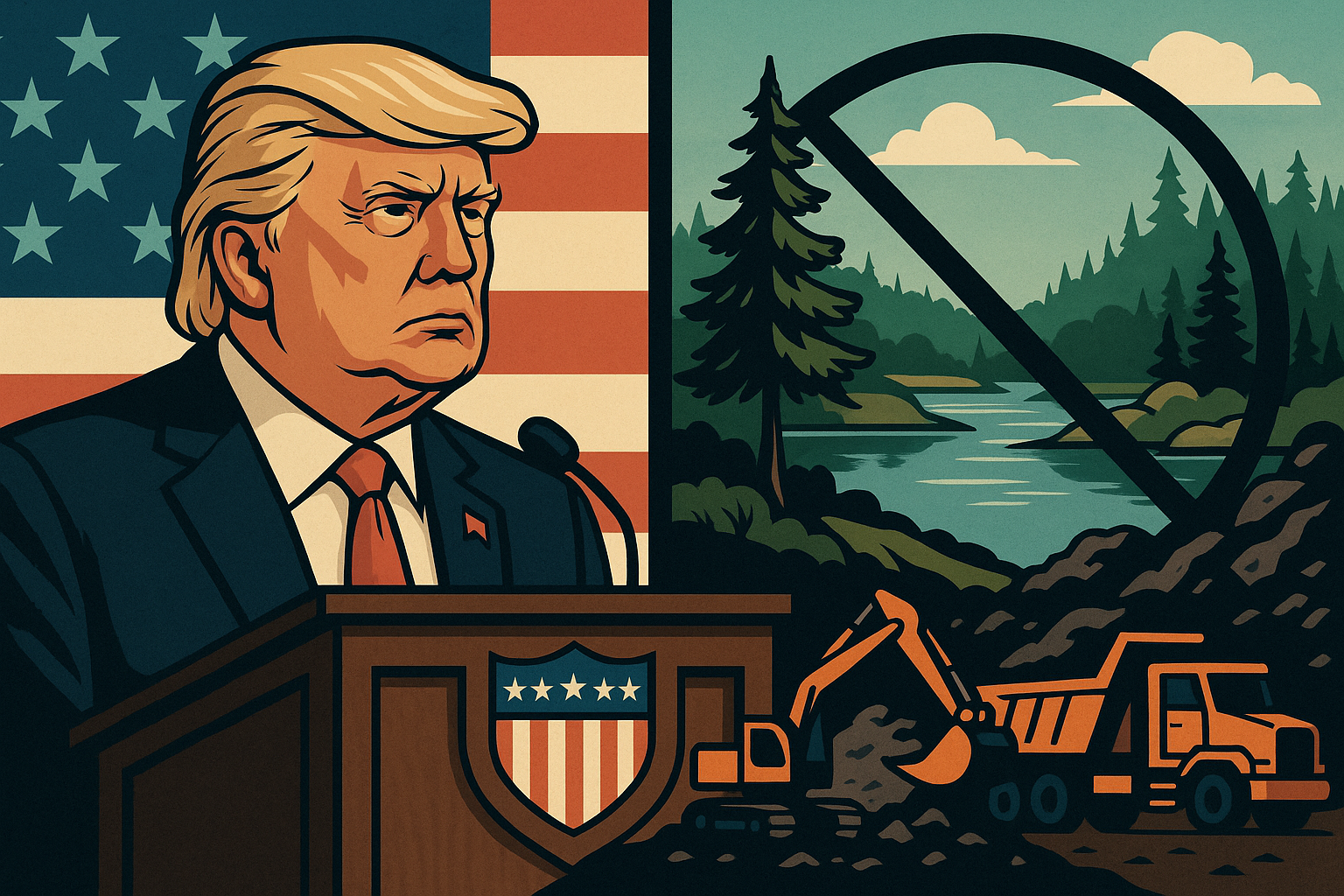Resource Extraction vs. Environmental Safeguards: A High-Stakes Political Trade-Off
In a political twist that has captivated both investors and environmental advocates, former President Donald Trump’s newly proposed “Big, Beautiful Bill” includes a sweeping provision that could authorize copper-nickel mining in Minnesota’s federally protected Boundary Waters Canoe Area Wilderness (BWCAW). The bill, part of a broader conservative reconciliation package, seeks to override environmental protections and limit judicial review, clearing a path for domestic mineral extraction in ecologically sensitive areas.
The legislation, if passed, would significantly reshape federal permitting norms—particularly for strategic minerals like copper and nickel, which are essential for electric vehicles, grid infrastructure, and the broader energy transition.
Why This Matters for Investors
The bill places national resource security squarely at odds with conservation policy, creating a charged but potentially lucrative window for mining investors. Should the measure gain traction, it could open previously off-limits reserves of high-grade copper and nickel—resources that are in tight global supply due to increasing green-tech demand.
“This isn’t just about one mine in Minnesota—it’s about the future of federal land use,” says David Lang, senior policy analyst at Raymond James. “If judicial review is weakened and environmental safeguards relaxed, it sets a precedent that could unlock more domestic mining on U.S. public lands.”
The Boundary Waters provision echoes past Trump-era rollbacks, but goes further by embedding it into a fast-tracked reconciliation package, which limits Senate debate and avoids filibuster. That raises the odds of at least partial passage, depending on post-election congressional alignment.
The Stakes: Domestic Supply vs. Reputational Risk
At the center of the policy change is the proposed Twin Metals Minnesota project, backed by Chile’s Antofagasta PLC. The site is estimated to contain more than 1 billion pounds of copper and 200 million pounds of nickel, alongside cobalt and platinum group metals. Mining these elements could boost U.S. strategic mineral independence, a top concern amid growing tensions with China.
However, the project faces deep opposition from environmental groups, Indigenous communities, and outdoor recreation stakeholders. The BWCAW is one of the most pristine freshwater ecosystems in North America, and opponents warn of acid drainage, water contamination, and irreversible ecological loss.
From an investor standpoint, this creates a classic risk-reward tradeoff: the opportunity to tap into high-grade ore comes with intense legal battles, regulatory uncertainty, and brand liability.
“ESG investors will avoid this like the plague. But for high-risk, high-return capital—especially those betting on battery metals—the upside is compelling,” says Melanie Hart, natural resources strategist at BNP Paribas.
Future Trends to Watch
- Legislative Trajectory:
The reconciliation format gives Republicans a fast-track opportunity if they regain Senate control in November. Investors should monitor election outcomes closely, as they directly affect policy momentum. - Copper & Nickel Price Volatility:
Spot prices for copper have surged above $10,000/ton, and nickel remains volatile amid geopolitical disruption in Indonesia and the Philippines. Domestic supply from Twin Metals could be a long-term price dampener—if approved. - Permitting Precedents:
If judicial review is curbed, this could reshape how environmental lawsuits are handled across sectors, potentially accelerating timelines for oil, gas, and mining projects nationwide. - ESG Reputational Fallout:
Companies tied to such ventures could face capital flight from sustainability-focused funds, even as they attract opportunistic investors targeting undervalued resource plays.
Key Investment Insight
Trump’s Boundary Waters provision reflects a broader shift toward resource nationalism and regulatory deregulatory tactics in U.S. politics. Investors should:
- Track companies exploring copper/nickel in the U.S.—especially those with advanced permitting.
- Hedge ESG backlash by evaluating long-term capital costs and reputational exposure.
- Watch legislation signals post-election, which could drastically alter the permitting landscape.
For those willing to embrace legal and political complexity, these policy shifts may present asymmetric upside in a tight commodity market. But the road will be rocky—and laden with litigation.
Stay Ahead with MoneyNews.Today
As politics, policy, and profitability collide in the U.S. mining sector, MoneyNews.Today will keep you ahead of the curve. Follow us for real-time insights into legislation, ESG risk, and investment opportunities at the crossroads of environment and industry.





